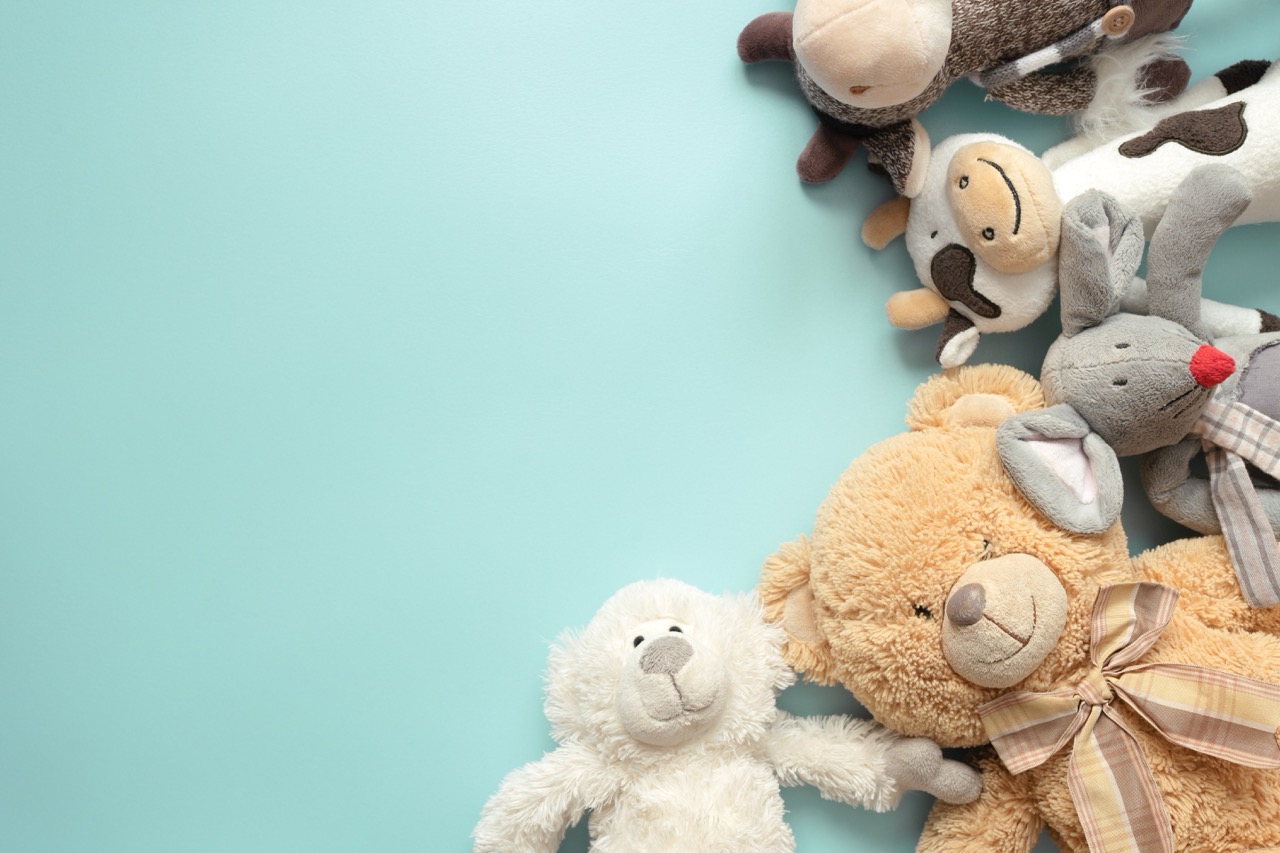Self-Comfort With Transitional Objects
 Author:
Sue Collier
Author:
Sue Collier
 Co-Author:
Allan Schwartz, Ph.D.
Co-Author:
Allan Schwartz, Ph.D.
 Editor:
Simone Paget
Editor:
Simone Paget
 Reviewer:
Holly Schiff, Psy.D.
Reviewer:
Holly Schiff, Psy.D.
Transitional objects are items, such as a beloved blanket, stuffed animal, or even a pet, that provide psychological comfort during moments of stress, uncertainty, or change. Originally studied in the context of child development, these objects are now recognized as vital tools for emotional regulation and well-being across the lifespan.
Whether it’s a childhood keepsake tucked in a drawer or a pet curled at one’s feet, these items can offer stability and reassurance in a rapidly shifting world.

Origins of Transitional Objects
The term “transitional object” was first introduced by British pediatrician and psychoanalyst Donald Winnicott in the 1950s.
He described these objects as physical items, often soft and soothing, that help infants separate from their primary caregivers and begin to develop a sense of self [1]. A baby’s favorite blanket or stuffed toy often becomes this bridge between dependency and independence.
While the original theory focused on early childhood, contemporary psychology has expanded this concept to include adults who rely on objects for comfort and emotional grounding.
Items once dismissed as sentimental or childish are now understood as meaningful tools that help people self-soothe and regulate emotions throughout life’s transitions [2]. This shift in understanding becomes even more apparent when examining how comfort objects function in adulthood.
Comfort Objects in Adulthood
Comfort objects in adulthood often take less obvious forms than a teddy bear. A well-worn hoodie, a piece of jewelry from a loved one, or even a coffee mug with sentimental value can serve as a source of comfort. These objects often carry emotional significance and may be linked to a person, place, or period of stability.
Adults might turn to these items during times of grief, anxiety, or significant life changes. For example, someone mourning the loss of a parent might find solace in wearing their parent’s watch. Another person might carry a small token during medical treatments or job interviews to feel more grounded.
Far from being a sign of immaturity, the use of comfort objects by adults is a form of adaptive coping that enables individuals to manage stress and enhance emotional resilience [3].
Research suggests that these objects can activate feelings of safety, reduce physiological arousal during stress, and even improve mood [4]. In this way, the psychological mechanism of adult comfort objects mirrors that of childhood transitional items; they serve as emotional anchors.
The Psychology Behind Security Blankets
The phrase “security blanket” has become shorthand for anything someone clings to for comfort. But the psychology behind it is grounded in attachment theory and emotional regulation. Security blankets, or their adult equivalents, represent a safe and stable presence in the face of distress.
Neuroscience supports the idea that familiar objects can trigger calming effects in the brain. The presence of a beloved object has been shown to reduce cortisol, the stress hormone, and activate areas of the brain associated with positive emotion and reward [5]. In situations where support from others is unavailable, these objects can function as a substitute for interpersonal comfort.
In therapeutic settings, clients are sometimes encouraged to create a “comfort kit” that includes items such as scented candles, soft fabrics, or photographs, each serving as a modern version of a security blanket. These kits can be particularly effective for those dealing with trauma, anxiety, or prolonged stress.
While many comfort items are inanimate, living companions such as pets also fulfill a similar role in providing emotional support.
Pets as Emotional Support Objects
Among the most dynamic and interactive transitional objects are pets. Although not inanimate, pets often serve a similar emotional role by providing companionship, routine, and unconditional love and acceptance. For people who struggle with anxiety, depression, or loneliness, pets can be powerful sources of emotional support.
Studies have shown that interactions with animals, particularly dogs and cats, can lower blood pressure, reduce stress hormones, and increase levels of serotonin and dopamine, which are associated with feelings of calmness and happiness [6]. Pets also contribute to a sense of purpose and structure, both of which are essential for emotional well-being.
Emotional support animals (ESAs) are recognized in clinical settings as part of a therapeutic strategy. While they are distinct from service animals in terms of legal protections, ESAs are often prescribed to people with mental health conditions to help alleviate symptoms and improve quality of life [7].
In many ways, pets represent a living version of a transitional object that is responsive, loyal, and reliably present in daily routines. In addition to animals, people often find comfort in meaningful objects during times of emotional distress, particularly in the aftermath of grief.
Sentimental Keepsakes and Grief Processing
Objects with sentimental value often become transitional items during periods of grief and loss. A handwritten note, a wedding ring, or even a favorite recipe card can help maintain a symbolic connection to a lost loved one. These keepsakes can soften the finality of loss and offer tangible continuity through the mourning process.
This process, known as “continuing bonds,” describes how people maintain an ongoing internal relationship with deceased loved ones [8]. Transitional objects play a key role in this process, serving not only as reminders but also as silent witnesses to personal history.
Mental health professionals have increasingly embraced the use of memory objects in grief counseling. These items can serve as prompts for storytelling, meaning-making, and emotional release. When used intentionally, they support the integration of loss and facilitate emotional resilience.
Workplace and Everyday Use of Stress-Relief Objects
Comfort items are not confined to home environments. Many people keep stress-relief objects at their desks or in personal bags for use in high-pressure situations. Stress balls, fidget tools, essential oil rollers, or even a favorite pen can provide a subtle but effective way to manage anxiety during the workday.
These tools may seem simple, but their presence helps activate the parasympathetic nervous system, which promotes relaxation and reduces fight-or-flight responses. By channeling nervous energy into a small object, people can regain a sense of control and focus [9].
In workplace settings where emotional expression may be limited, such items enable discreet self-regulation. When integrated into daily routines, these stress-relief objects become a quiet yet vital component of personal wellness strategies.
Cultural and Social Dimensions
The use of transitional objects varies across cultures, but the underlying need for comfort and emotional grounding is universal.
In some societies, the idea of carrying personal talismans or protective charms is deeply ingrained in tradition. Religious symbols, beads, or amulets may serve a similar function to comfort objects, offering a sense of spiritual or emotional security.
Social stigma may influence how openly adults use these objects. Some may feel embarrassed or ashamed about needing a “security blanket,” particularly in cultures that value stoicism or emotional independence. However, growing awareness of emotional health is helping to normalize the use of transitional objects among adults.
With the rise of digital connection and physical disconnection, the need for tactile, grounding experiences may be stronger than ever. Transitional objects offer a counterbalance to the intangible and often overstimulating nature of modern life.
Supporting Emotional Well-Being Through Objects
Using transitional objects is not a substitute for therapy or interpersonal connection, but it can be a powerful complement to these approaches. These objects support emotional well-being by offering a dependable source of comfort during uncertain or distressing times.
For those in therapy, transitional objects can serve as physical reminders of progress or a sense of safety. For others, simply having a comforting item nearby can provide emotional reassurance that supports stability, especially when navigating major life transitions, such as divorce, relocation, job changes, or health challenges.
The practice of integrating these objects into daily life can also become a form of mindfulness. Taking a moment to hold, wear, or look at an object of comfort invites the nervous system to shift from a state of hyperarousal to one of calm, promoting emotional regulation and mental clarity.
Finding Balance Between Holding On and Letting Go
The role of transitional objects in self-comfort reveals an essential truth: comfort does not always need to come from within; it can also be found in the tangible, the familiar, and the cherished.
Whether through a well-worn hoodie, a beloved pet, or a keepsake tied to a cherished memory, these objects help nurture emotional resilience and offer a sense of grounding during life’s changes.
Acknowledging the value of transitional objects is an invitation to honor the quiet, often overlooked ways people care for themselves. They are not just things; they are emotional touchstones that hold memory, meaning, and the power to soothe. Embracing their use can be an act of self-respect, compassion, and healing.
- Winnicott, D. W. (1953). Transitional objects and transitional phenomena. International Journal of Psychoanalysis, 34, 89–97. https://www.pep-web.org/document.php?id=ijp.034.0089a
- Leith, K. P., & Baumeister, R. F. (1996). Why do bad moods increase self-defeating behavior? Emotion, risk taking, and self‑regulation. Journal of Personality and Social Psychology, 71(6), 1250–1267. https://pubmed.ncbi.nlm.nih.gov/8979390/
- Hooley, J. M., & Gotlib, I. H. (2000). A diathesis–stress conceptualization of expressed emotion and clinical outcome. Applied and Preventive Psychology, 9(3), 135–151. https://web.stanford.edu/group/mood/gotlib_pdfs/hooley_gotlib_2000.pdf
- Ko, C.-H., Liang, Y.-T., Liao, Y.-C., & Chen, H.-F. (2024). Exploring the relationship between transitional object attachment and emotion regulation in college students. Healthcare, 13(1), 39. https://doi.org/10.3390/healthcare13010039
- Coan, J. A., Schaefer, H. S., & Davidson, R. J. (2006). Lending a hand: Social regulation of the neural response to threat. Psychological Science, 17(12), 1032–1039. https://doi.org/10.1111/j.1467-9280.2006.01832.x
- Beetz, A., Uvnäs-Moberg, K., Julius, H., & Kotrschal, K. (2012). Psychosocial and psychophysiological effects of human-animal interactions: The possible role of oxytocin. Frontiers in Psychology, 3, 234. https://www.frontiersin.org/articles/10.3389/fpsyg.2012.00234/full.
- U.S. Department of Housing and Urban Development. (2020). Assessing a person’s request to have an animal as a reasonable accommodation under the Fair Housing Act. https://www.hud.gov/sites/dfiles/PA/documents/HUDAsstAnimalNC1-28-2020.pdf
- Goldstein, R. D., Petty, C. R., Morris, S. E., et al. (2020). Transitional objects of grief. Comprehensive Psychiatry, 98, 152161. https://doi.org/10.1016/j.comppsych.2020.152161
- McEwen, B. S. (2007). Physiology and neurobiology of stress and adaptation: Central role of the brain. Physiological Reviews, 87(3), 873–904. https://doi.org/10.1152/physrev.00041.2006
The Clinical Affairs Team at MentalHealth.com is a dedicated group of medical professionals with diverse and extensive clinical experience. They actively contribute to the development of content, products, and services, and meticulously review all medical material before publication to ensure accuracy and alignment with current research and conversations in mental health. For more information, please visit the Editorial Policy.
We are a health technology company that guides people toward self-understanding and connection. The platform provides reliable resources, accessible services, and nurturing communities. Its purpose is to educate, support, and empower people in their pursuit of well-being.
Sue Collier is a seasoned editor and content writer with decades of experience across healthcare, dental, legal, education, and technology sectors.
Holly Schiff, Psy.D., is a licensed clinical psychologist specializing in the treatment of children, young adults, and their families.
The Clinical Affairs Team at MentalHealth.com is a dedicated group of medical professionals with diverse and extensive clinical experience. They actively contribute to the development of content, products, and services, and meticulously review all medical material before publication to ensure accuracy and alignment with current research and conversations in mental health. For more information, please visit the Editorial Policy.
We are a health technology company that guides people toward self-understanding and connection. The platform provides reliable resources, accessible services, and nurturing communities. Its purpose is to educate, support, and empower people in their pursuit of well-being.